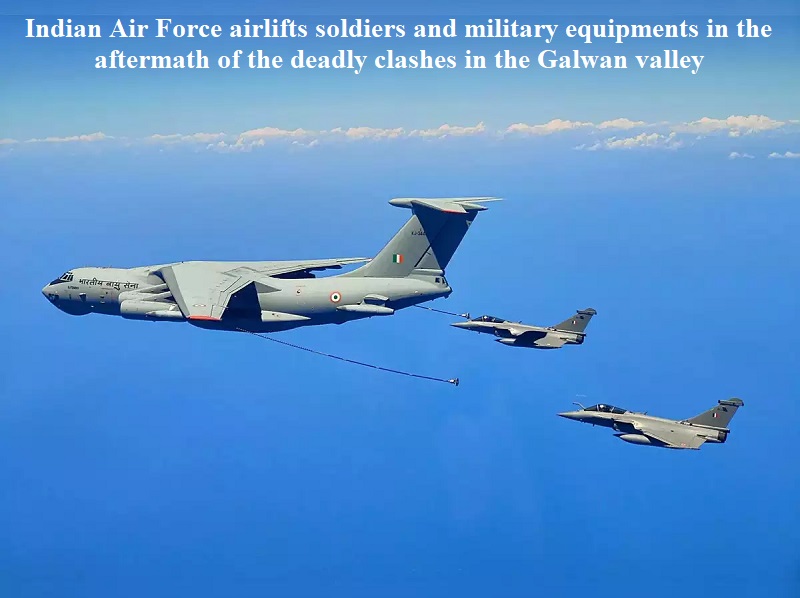
After the deadly clashes in the Galwan valley, the Indian Air Force conducted a massive operation, transporting over 68,000 army soldiers and various military equipment to eastern Ladakh along the Line of Actual Control (LAC), as reported by the PTI news agency, based on defense sources. This rapid deployment was made possible through a combination of strategic airlift capabilities and enhanced surveillance measures.
To strengthen its presence in the region, the Indian Air Force deployed Su-30 MKI and Jaguar fighter jets for continuous surveillance and intelligence gathering. Following the clashes on June 15, 2020, several squadrons of combat aircraft were put on “offensive posturing” mode.
The Indian Air Force’s transport fleet played a crucial role in quickly transporting troops and weapons to the challenging areas along the LAC. This fleet included C-130J Super Hercules and C-17 Globemaster aircraft, carrying a total load of 9,000 tonnes.
As tensions escalated, the Indian Air Force used a significant number of remotely piloted aircraft (RPAs) for vigilant monitoring of Chinese activities. Active fighter jets such as the Rafale and Mig-29 aircraft participated in combat air patrols. Helicopters were also employed to transport prefabricated structures, ammunition, and spares for military equipment to mountain bases.
The Su-30 MKI and Jaguar fighter jets effectively monitored Chinese troop movements and positions within a range of approximately 50 km.
In response to the conflict, the Indian Air Force rapidly strengthened its air defense capabilities by installing various radars and surface-to-air guided weapons at frontline bases along the LAC.
The overall strategy aimed to fortify the military posture, maintain credible forces, and carefully observe the enemy’s buildup. This approach was implemented to ensure readiness for any potential situation.
The operation highlighted the Indian Air Force’s increased airlift capabilities compared to previous efforts like ‘Operation Parakram,’ launched after the 2001 Parliament attack, as reported by sources.
Both sides maintain a presence of around 50,000 to 60,000 troops each. High-level military talks continue, with India advocating for further disengagement of troops from friction points. A recent meeting between National Security Advisor Ajit Doval and Chinese diplomat Wang Yi included discussions regarding the border standoff on the sidelines of a BRICS meeting. The standoff began in May 2020 after a violent clash near Pangong Lake.

Post Your Comments